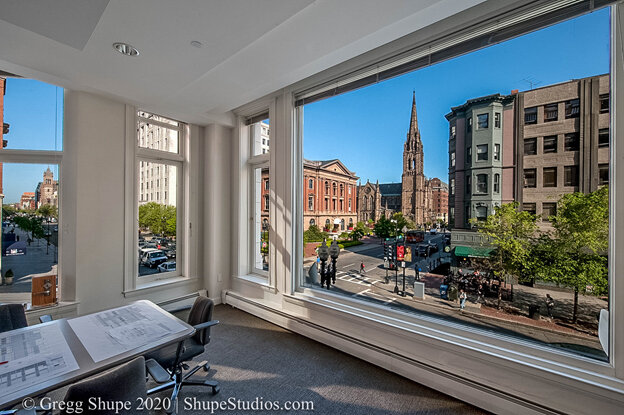A break from my normal blogs, in this post, I want to provide a little historical context for architectural photography, including how it has grown with photography as a whole. It’s important to understand how architectural photography captures the history and culture of buildings, skylines, and whole cities, and how that should factor into your own search for the perfect architectural photography.
The History of Architectural Photography
Fun fact: the first photography was architectural photography. View from the Window at Le Gras was taken by Nicéphore Niépce in France, showing buildings and surrounding countryside of his estate. Buildings were a natural choice for early photography, especially for the very early methods like the ones Niépce employed. With sunlight striking both sides of roofs in the photos, traditional estimates suggested that the photo’s exposure lasted roughly a whopping eight hours.
My Family’s History of Photography: Sigismund Blumann
My great grandfather Sigismund Blumann (1872 – 1956) of Fruitvale CA was one of the early pioneers of professional photography, making his living as a photographer in the San Francisco area. He divided his time between photography (shooting mainly people, but also architecture and natural landscapes) and teaching photography. He even wrote several manuals on photography (you can see some of them for sale here on biblo.com). He was known for his Lithobrome images, something which if you Google It you’ll find his name in the top results.
He also would hand color his black & white images.
Evolution from a Science to an Art
While initial photography use was widely experimentation and novelty, by the 1860s architectural photography became an established medium as exposure times shortened and techniques evolved, growing and evolving alongside the rapidly changing architecture it photographed. In the latter half of the 20th century, the relationship between architects and business contracting architectural photographers, alongside more creative use of perspective and composition turning the opinion of the field to one of art.
The Joy of Photographing Historical Buildings
It isn’t just old photography that captured history. I’ve also had the pleasure of shooting photos for clients in many historical buildings or capturing the surrounding cityscape to draw attention to their location. New England and Boston, in particular, have many great historical buildings – and not just the ones you see on the Freedom Trail.
Architectural photography has evolved over and been refined over the years, and your next architectural photographer should be no different. Make sure to pick a professional with the three most important qualities of a photographer, and make sure to talk to them early in the process. If you’re in the Boston area or greater New England, I hope you’ll reach out to me at Shupe Studios. Contact me today to get started.









